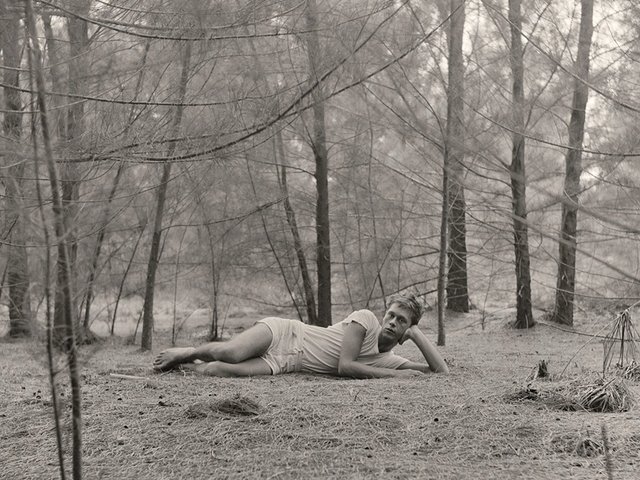In one of Randa Mirza’s photographs at Les Rencontres d'Arles, a blonde woman smiles and throws a peace sign at the camera. Behind her is a tank—its long cannon pointing towards the top of her head—as well as soldiers and an elderly woman holding a plastic bottle of gasoline.
The scene is uncanny. It brings to mind Photo Op (2005), the photomontage depicting former UK prime minister Tony Blair taking a selfie, plumes of fiery smoke behind him, created by the artist duo Peter Kennard and Cat Phillipps as a response to the Iraq war. As so happens, Mirza’s series, in which she merges images of conflict in Lebanon with scenes of leisure, was made at around the same time.
Yet while the conversations that these works spark—about, for example, the ability of images to shape our perception of global events, and to turn suffering into spectacle—are not new, the discourse has not stood still. Several exhibitions at this leading photography festival, held across multiple venues in the old, picturesque Provençal city of Arles, south-west France, make that clear. They show us how new technologies, ideologies and ways of life require us to look afresh at the power of the image—and the real-life dangers it can pose.
This begins with Mirza herself. Her show, Beirutopia, locates Lebanon in what she describes as a “multi-dimensional” crisis, struggling to grapple with the after-effects of the civil war which ravaged the country from 1975 to 1990. For the titular work (2010-19), she photographed real-estate billboards placed “in situ” at construction sites around the country’s capital, as part of the government’s ongoing postwar reconstruction programme. These billboards are idealised, homogenised projections—entirely detached from Lebanon and its history—and their artifice is made clear by the real-life objects that surround them: red bricks piled high, a glowing orange bollard. What else, the images seem to ask, do these glossy illusions hide? What true progress do they impede?
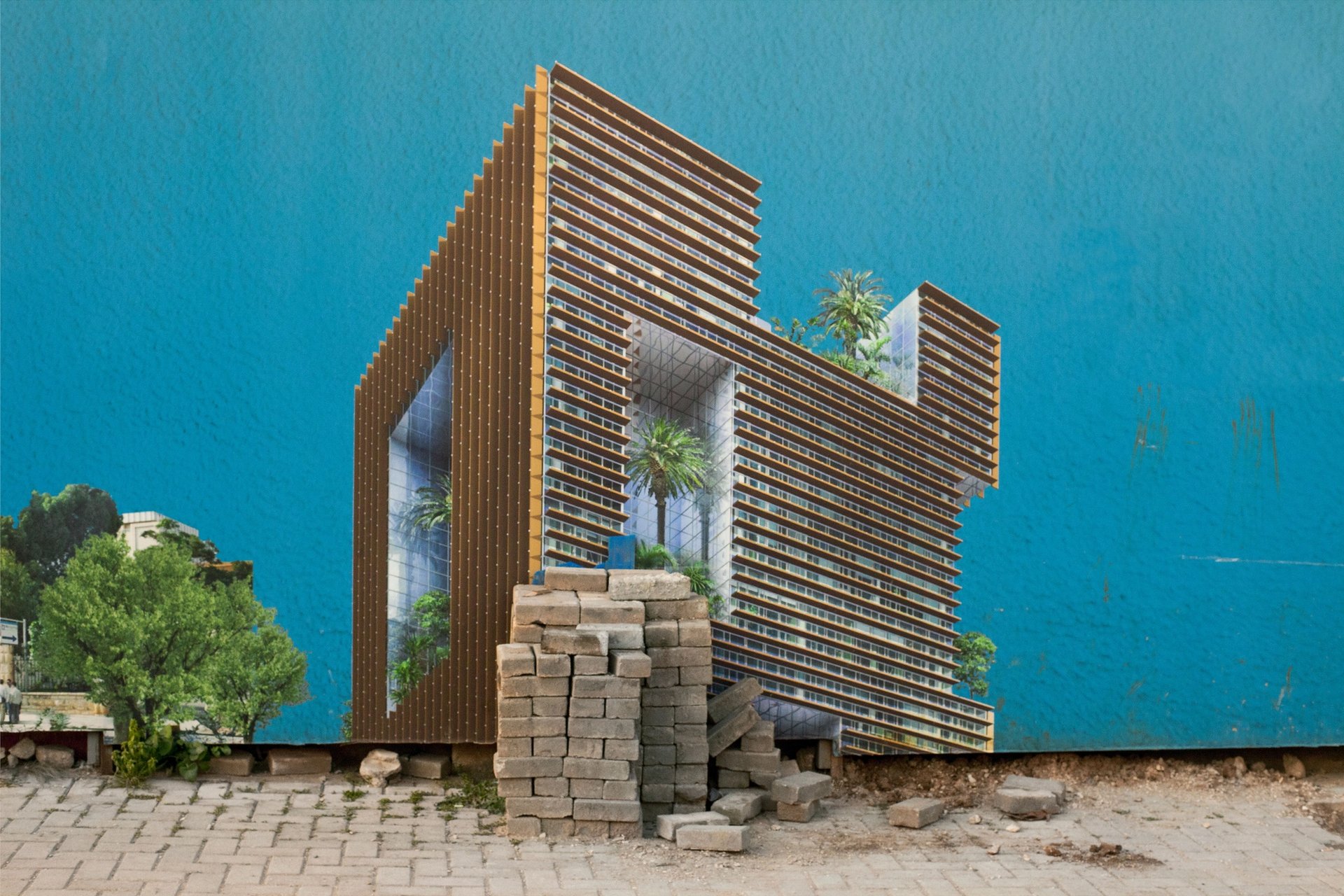
Randa Mirza. The Selective Residence, from the Beirutopia series (2019) Courtesy of the artist / Tanit Gallery
France’s Stephen Dock is another photographer exploring mythologies, this time within his own work. In 2011, aged 22 and without training, he travelled to Syria to cover the civil war that had begun to stir there, continuing on to visit Jordan, Iraq, Lebanon, Lesbos and Macedonia. For his exhibition at Rencontres D’Arles, he interrogates the photographs he produced on this journey, cropping, re-organising and eventually annihilating them.
In one room, he displays a selection in a grid, the places and dates left off of the captions. Whose stories these are, and where they begin or end, is lost to time and process. Later, a video installation merges hard-to-read footage drawn from various online sources—close-ups of mouths speaking, explosions, figures wandering a landscape. This was an age when photographs—and grainy surveillance documentation—began being shared widely across the internet, and here is the confusion that follows.

Installation view of Stephen Dock, Echoes series (2011-23)
Photo: Luisa Mielenz
Other works, meanwhile, bring this process to its natural conclusion: images, run through a photocopier over and over, disintegrating into nothingness. The final piece is Untitled I (2023), in which representation has gone and all that is left is a flurry of blood-red pixels. This is the fallacy of attempting to understand the world in a picture. It cannot be done.
It feels pertinent to see these themes explored in earnest today, in a “post-truth” age, where emotions matter more than facts—and imagery is being manipulated ever more convincingly to serve political agendas. (Right-wing, populist parties have tended to benefit the most from this transformation, and it is hard to ignore that Rencontres d’Arles opened amid a French parliamentary election in which the far right ultimately lost out on a majority but made significant gains). It is the post-truth world that the Brooklyn-based photographer Debbie Cornwall zones in on for her contribution to the event.
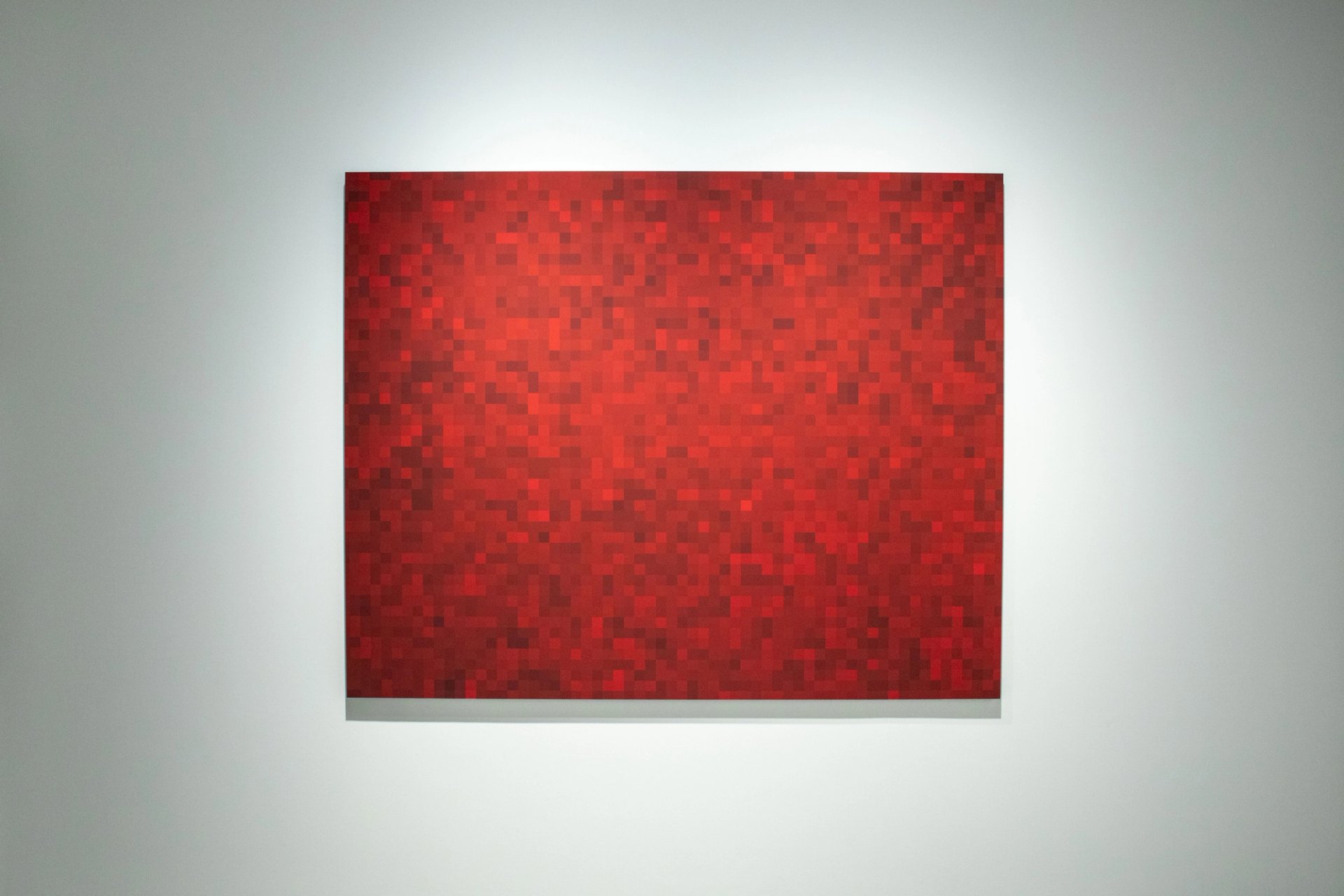
Installation view featuring Stephen Dock, Untitled I (2023) from the Echoes series (2011-23)
Photo: Luisa Mielenz
Her show focuses on two bodies of work—Model Citizens (2024) and Necessary Fictions (2020)—that highlight the performative nature of US society, where reality and fiction are blurred. Many of the pictures are shocking. This is especially true of sets of images taken at military and border patrol training camps across the country—among them “Atropia”, a fake nation filled with mock Iraqi and Afghani villages. In the photographs, soldiers grin at the camera, their faces covered in fake wounds; figures kneel, hands tied behind their back; and citizens of Iraq and Afghanistan stand dressed in costume, hired as actors. Many who take part, the wall text explains, are war refugees.
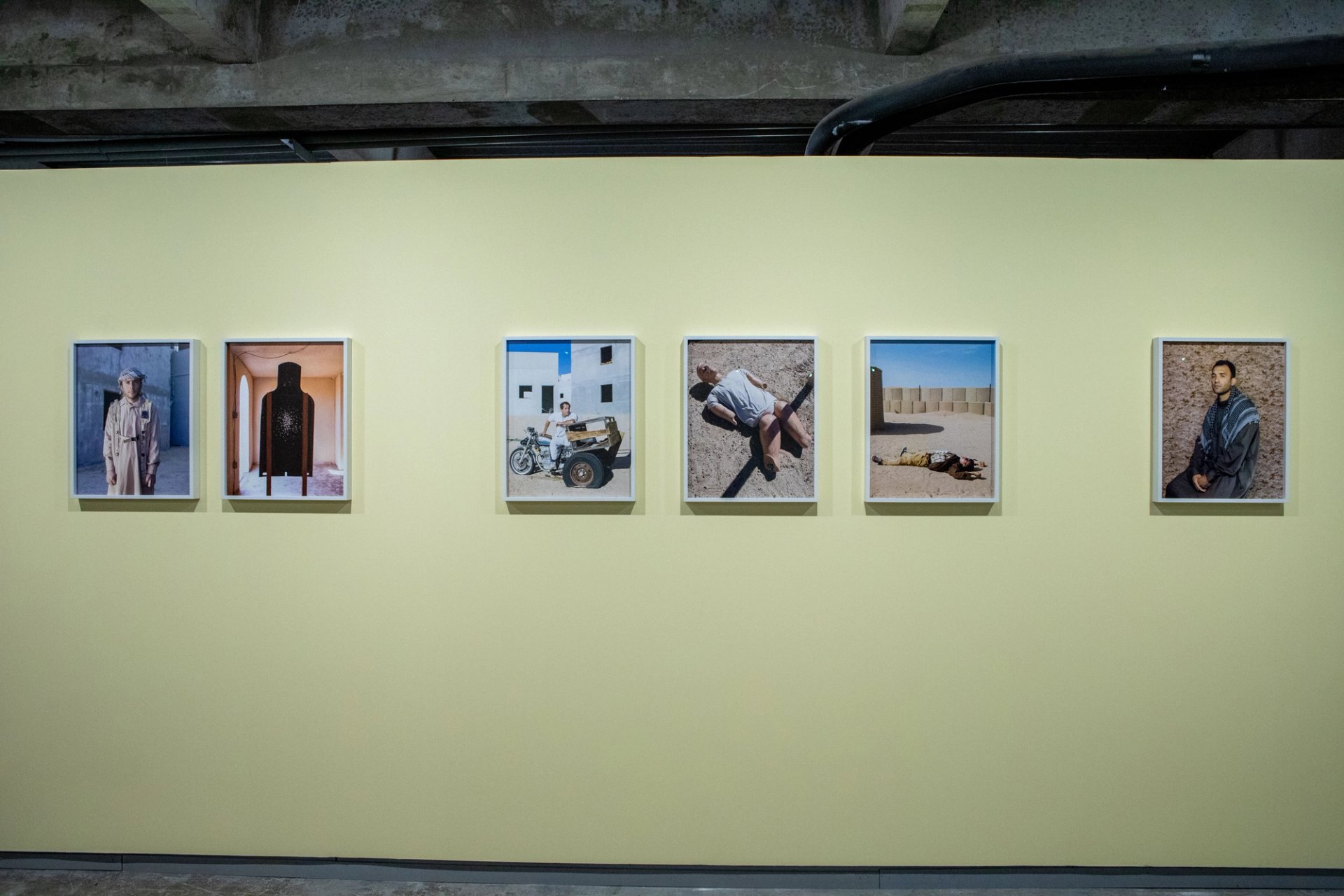
Installation view of Debi Cornwall, Model Citizens, featuring images from the series Necessary Fictions (2020)
Photo: Luisa Mielenz
A film installation tells a story, through a montage of Hollywood film clips overlaid with court testimonies, in which a soldier was killed because he mistook a police officer to be a fellow participant in one exercise. Other pictures, meanwhile, depict Make America Great Again supporters standing drenched in paint, and one man dragging a giant US flag across our eye line. We reinforce fictions, visually and physically, this exhibition reminds us, in our daily lives. These are the images we make for ourselves—and the consequences are well known.
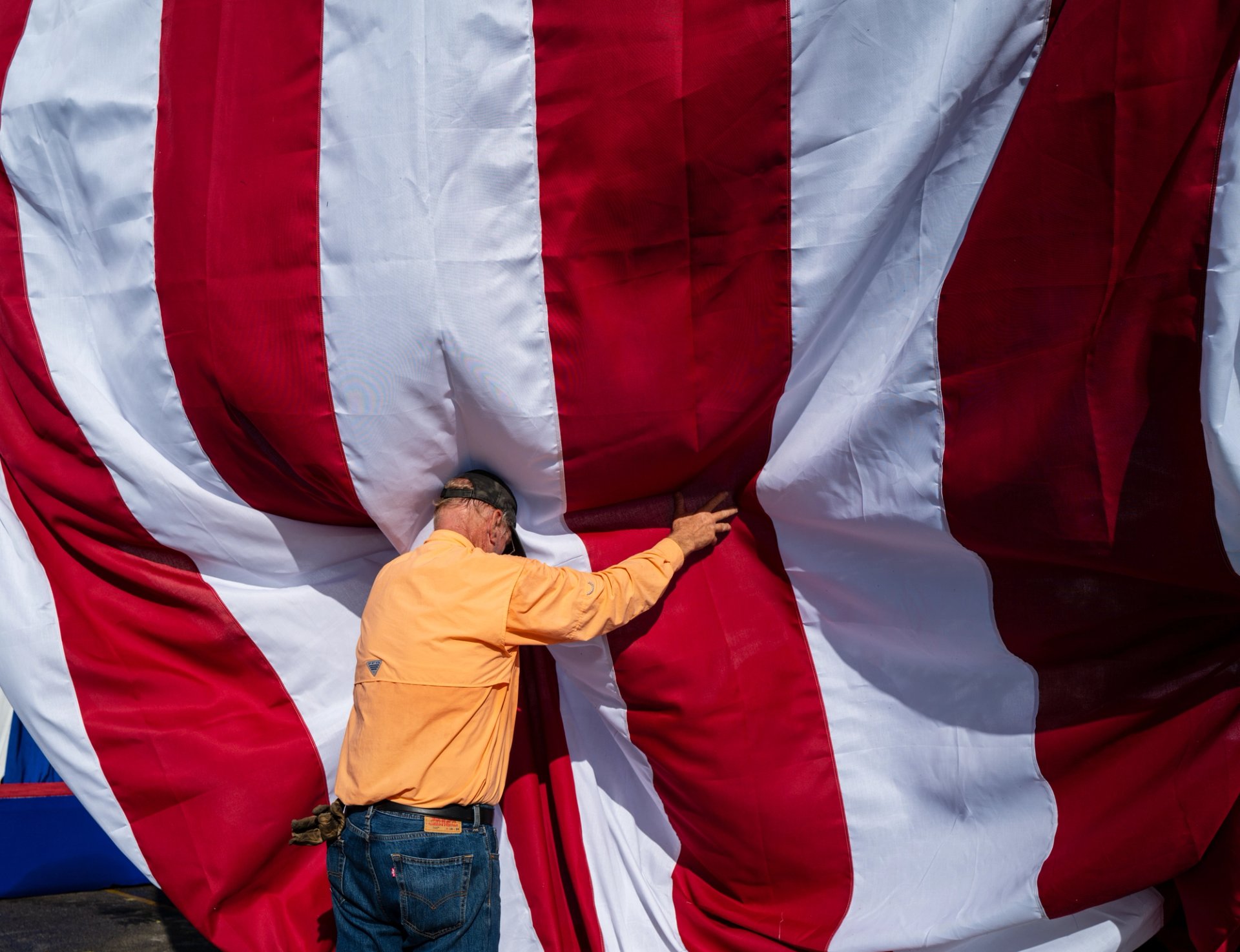
Debi Cornwall, Flagraising, “Save America” rally, Miami, Florida, US, from the Model Citizens series (2022)
Courtesy of the artist
None of these shows proffer an answer to the questions they pose—indeed, how could they? But what is perhaps the closest to one comes from an unexpected source.
In When Images Learn to Speak: Conceptualised Documentary Photography from Astrid Ullens de Schooten Whettnall’s Collection, an exhibition at Luma Arles, the text reads: “The foundation’s collection… testifies to another important truth: while it recognises that the single image can be beautiful, even great, it also knows that it says surprisingly little about the world.”
What follows are a series of groupings that, together, speak of the power of multiplicity, of nuance and seeking the bigger picture. In an increasingly fractured, frightened world, this is something we could all do with keeping at the top of our minds.
- Les Rencontres d'Arles runs until 29 September



